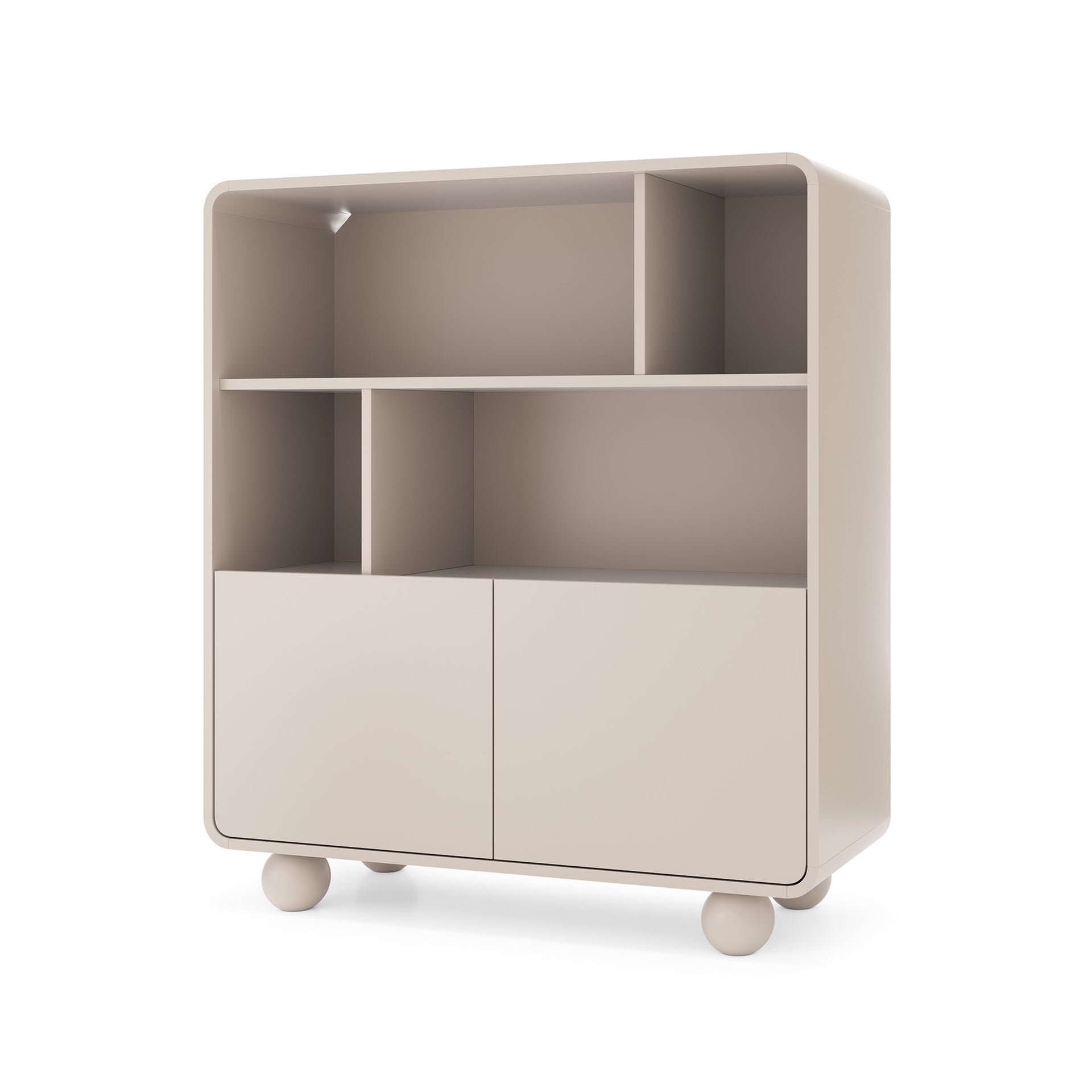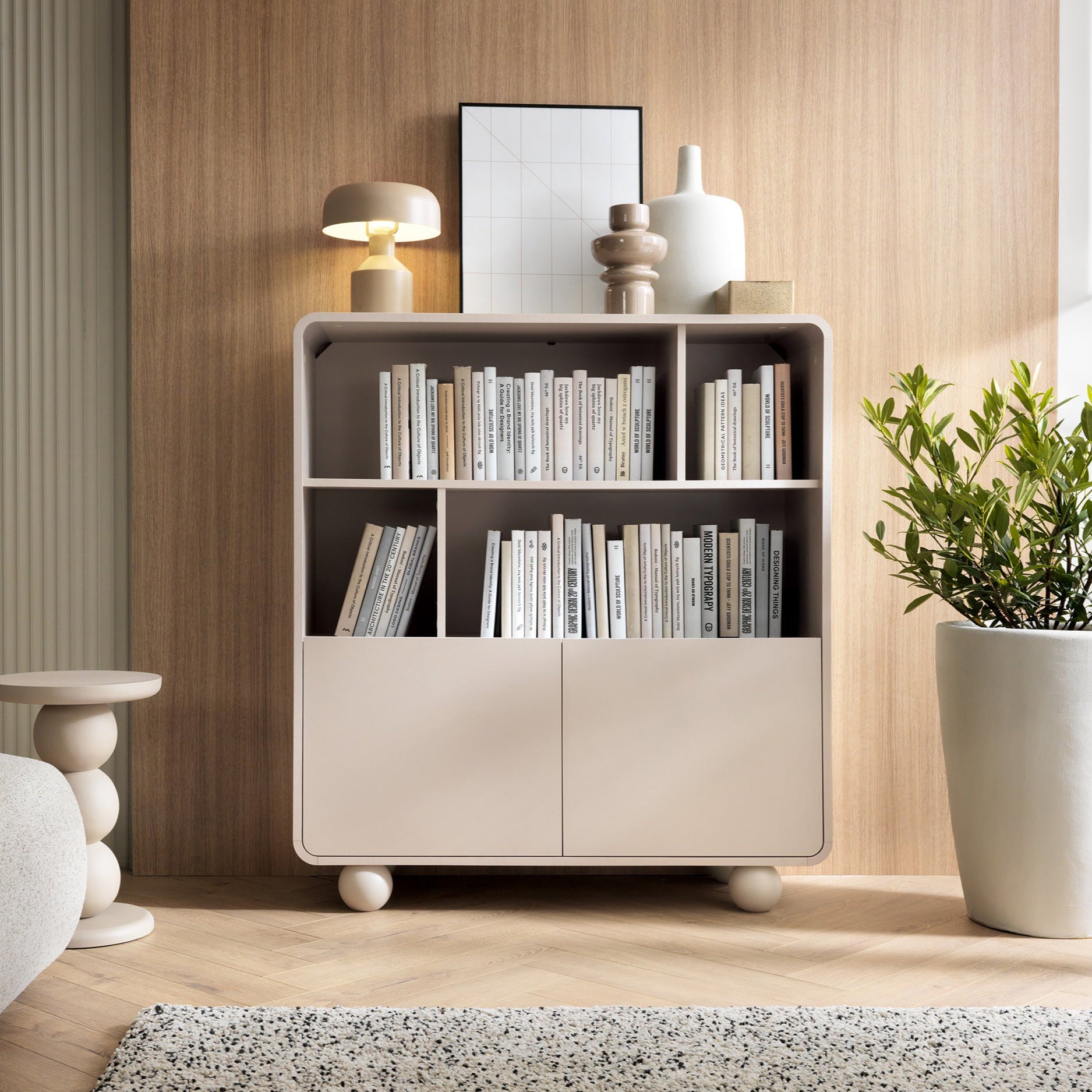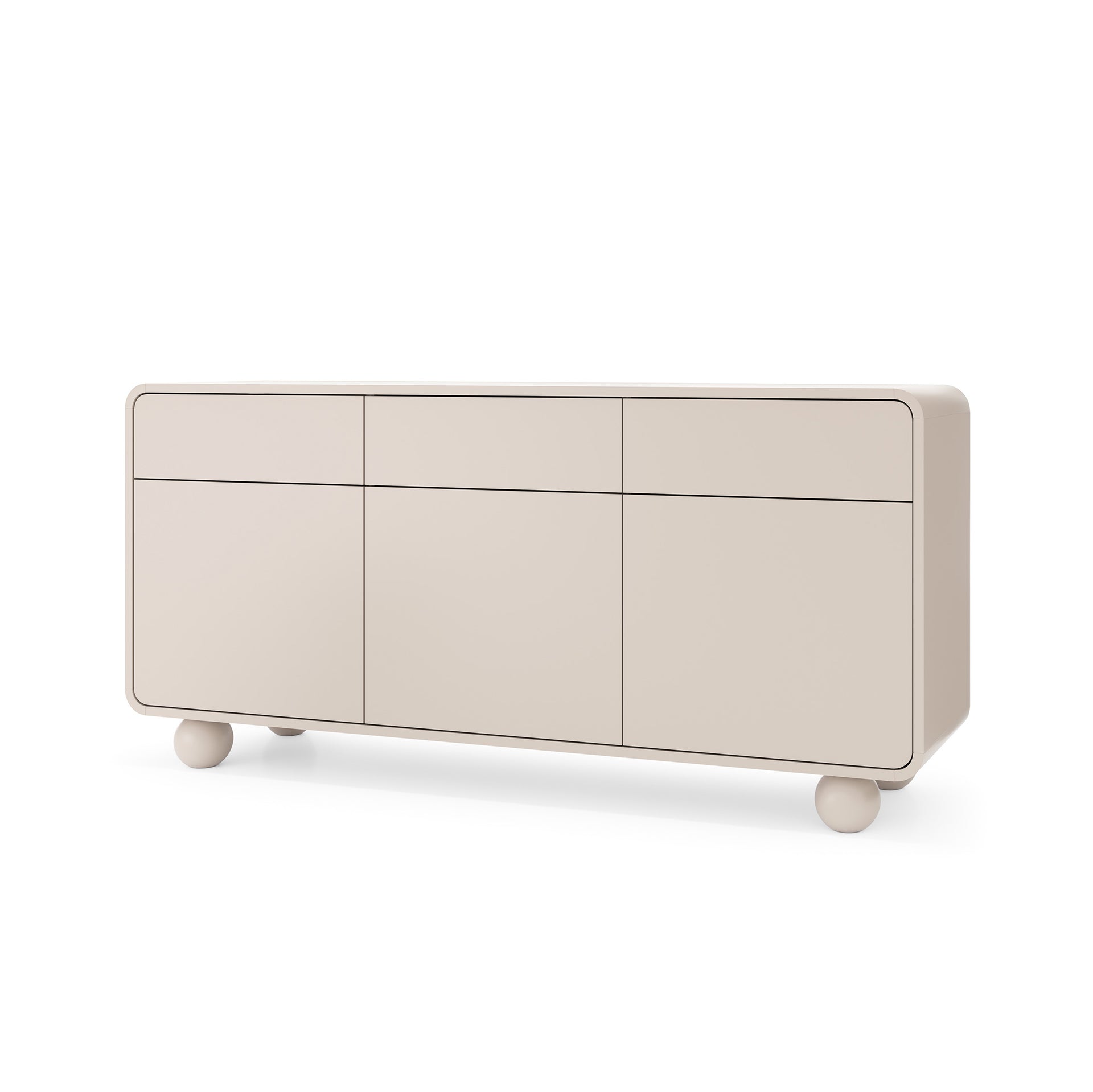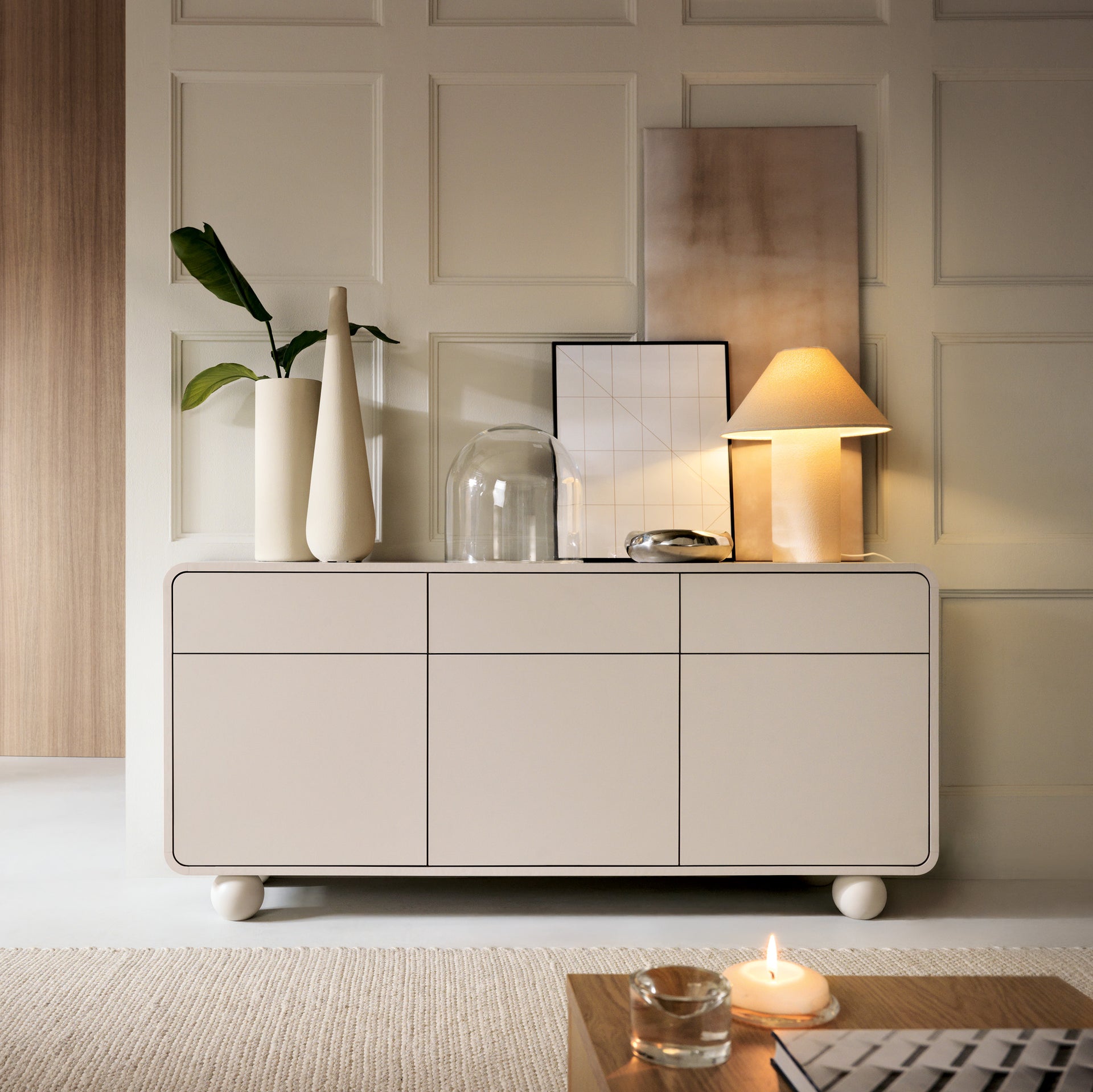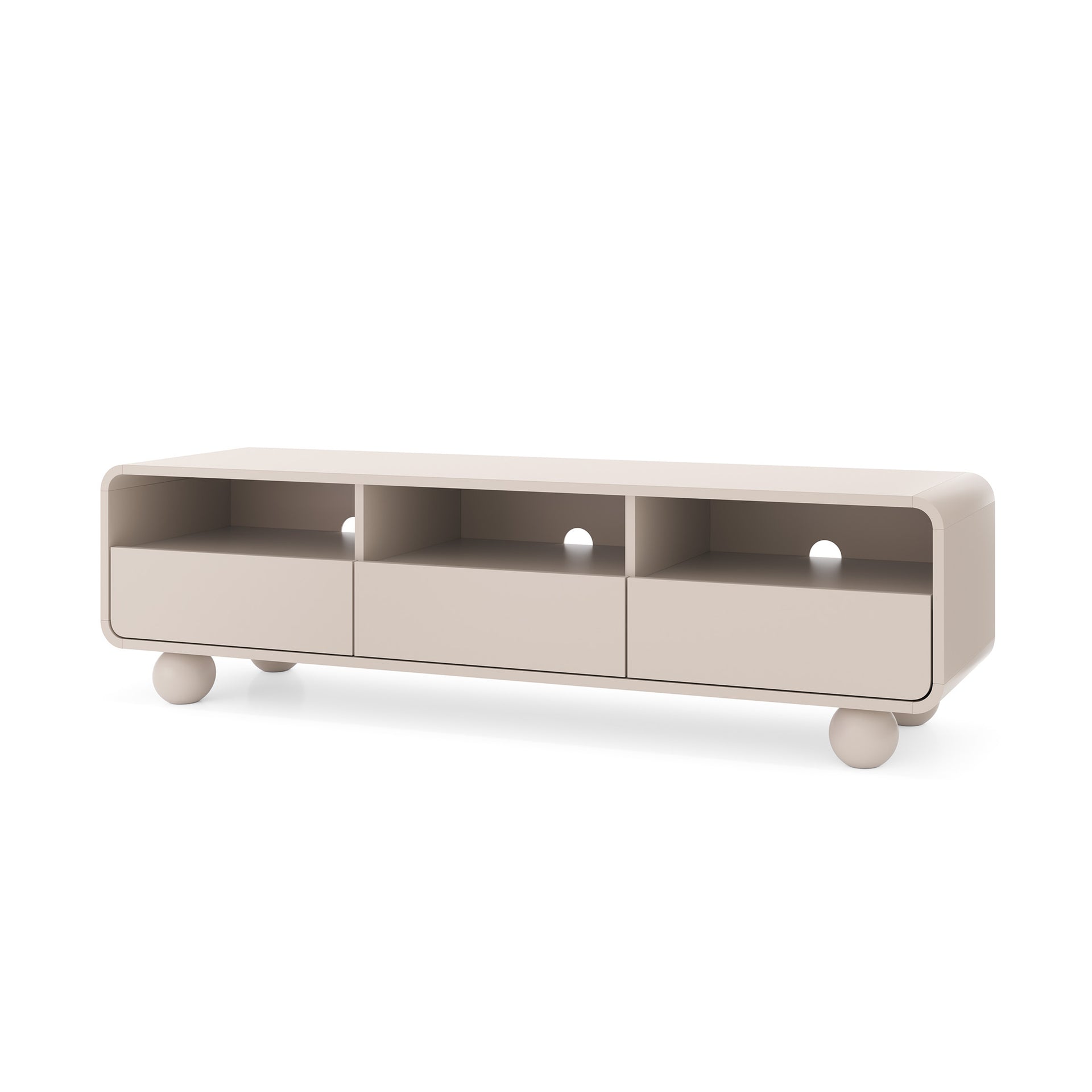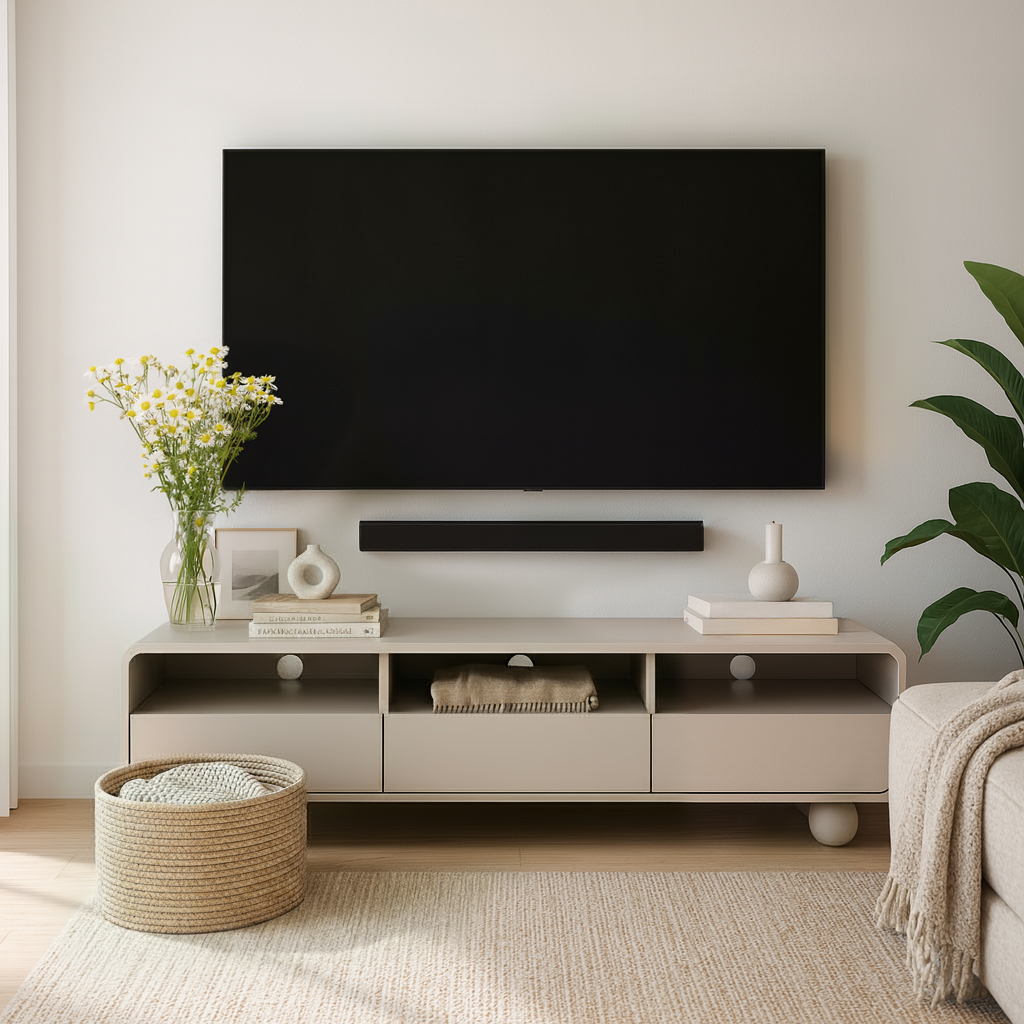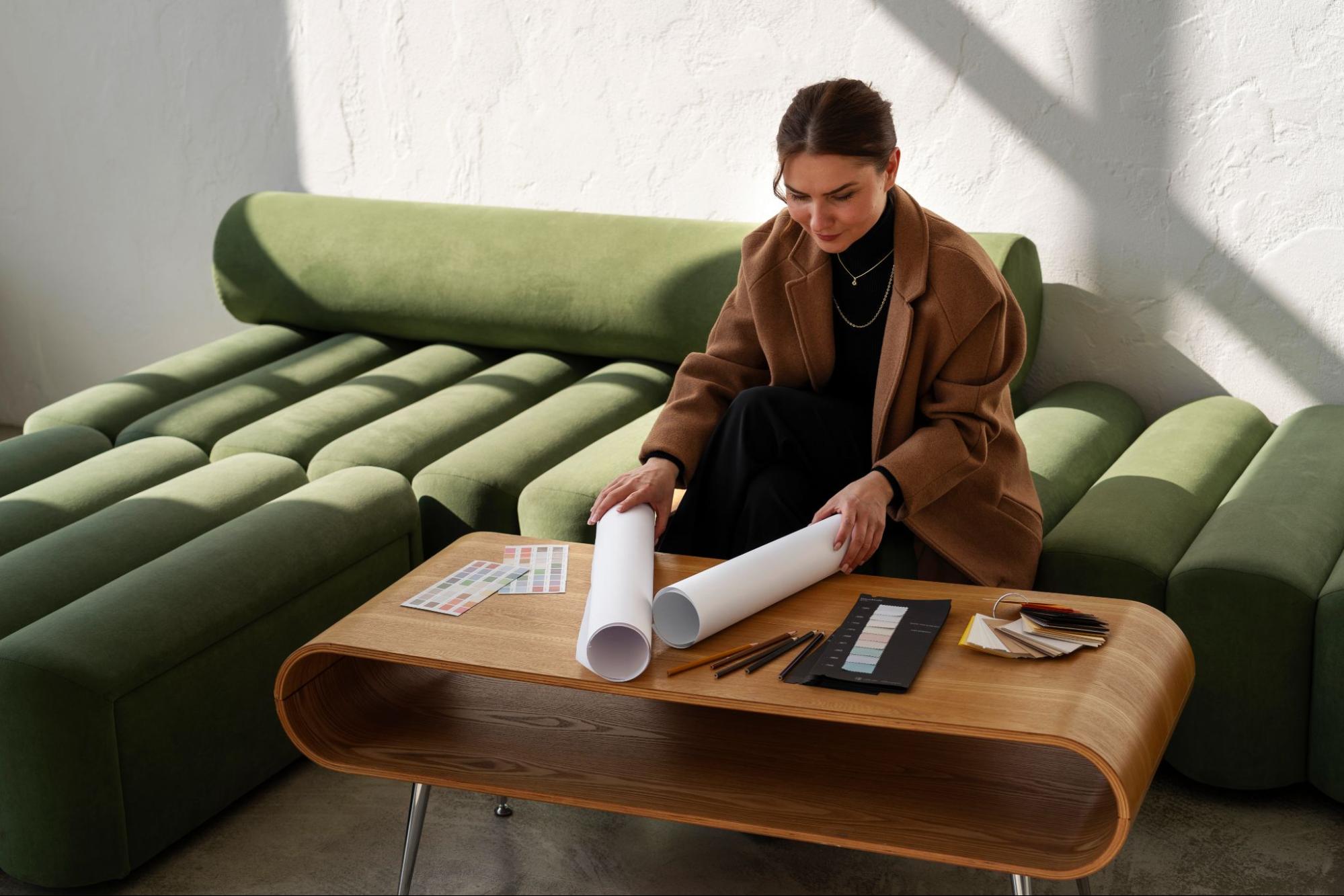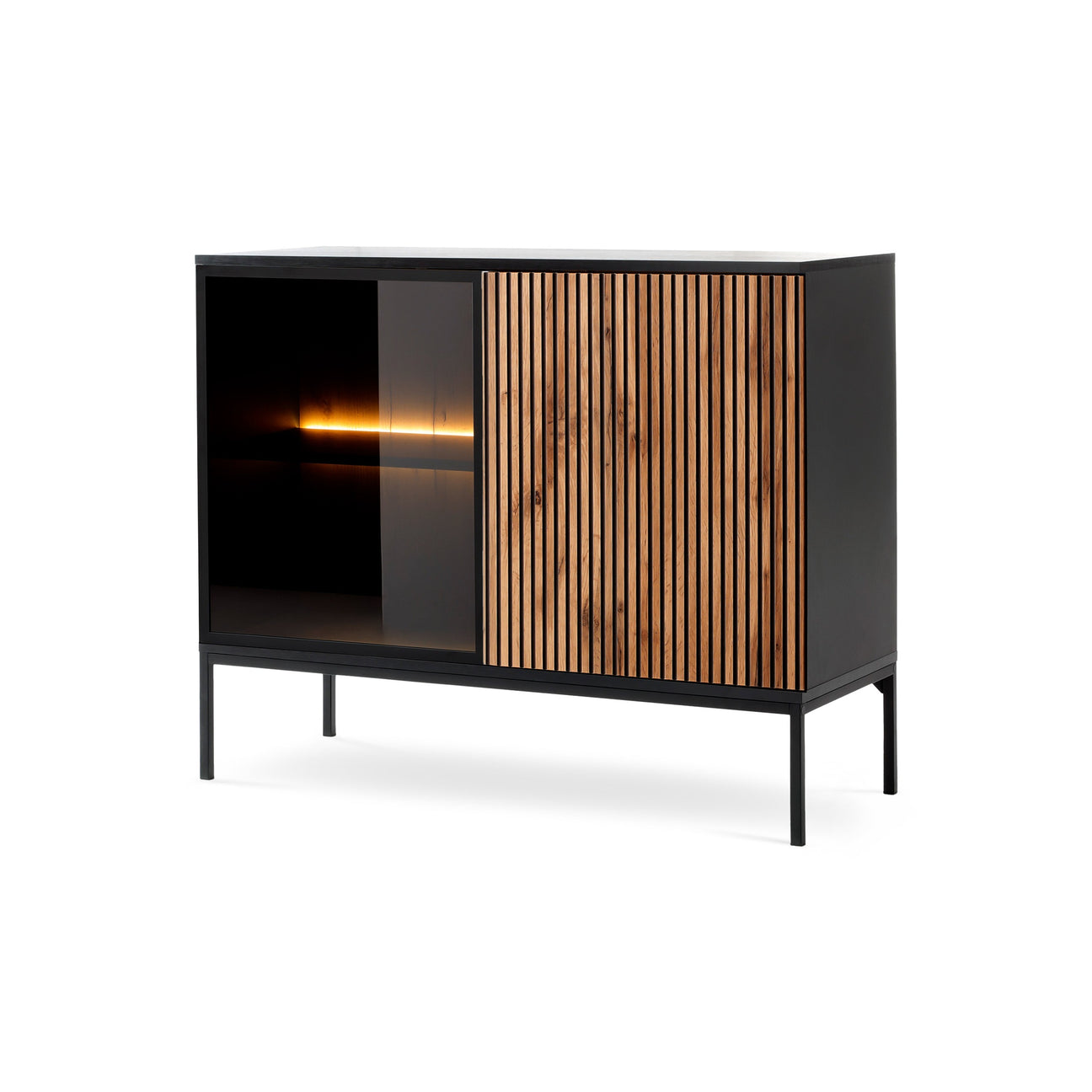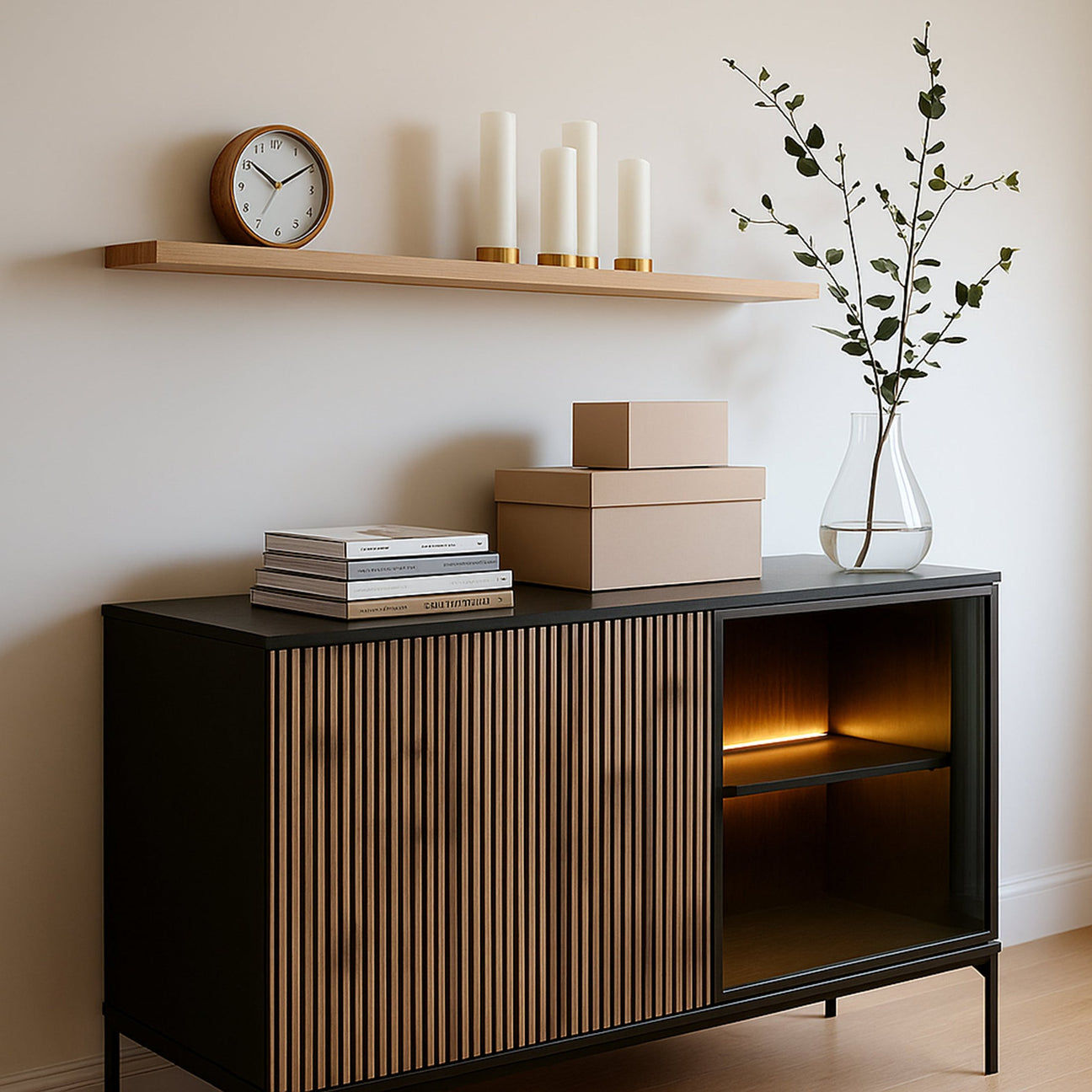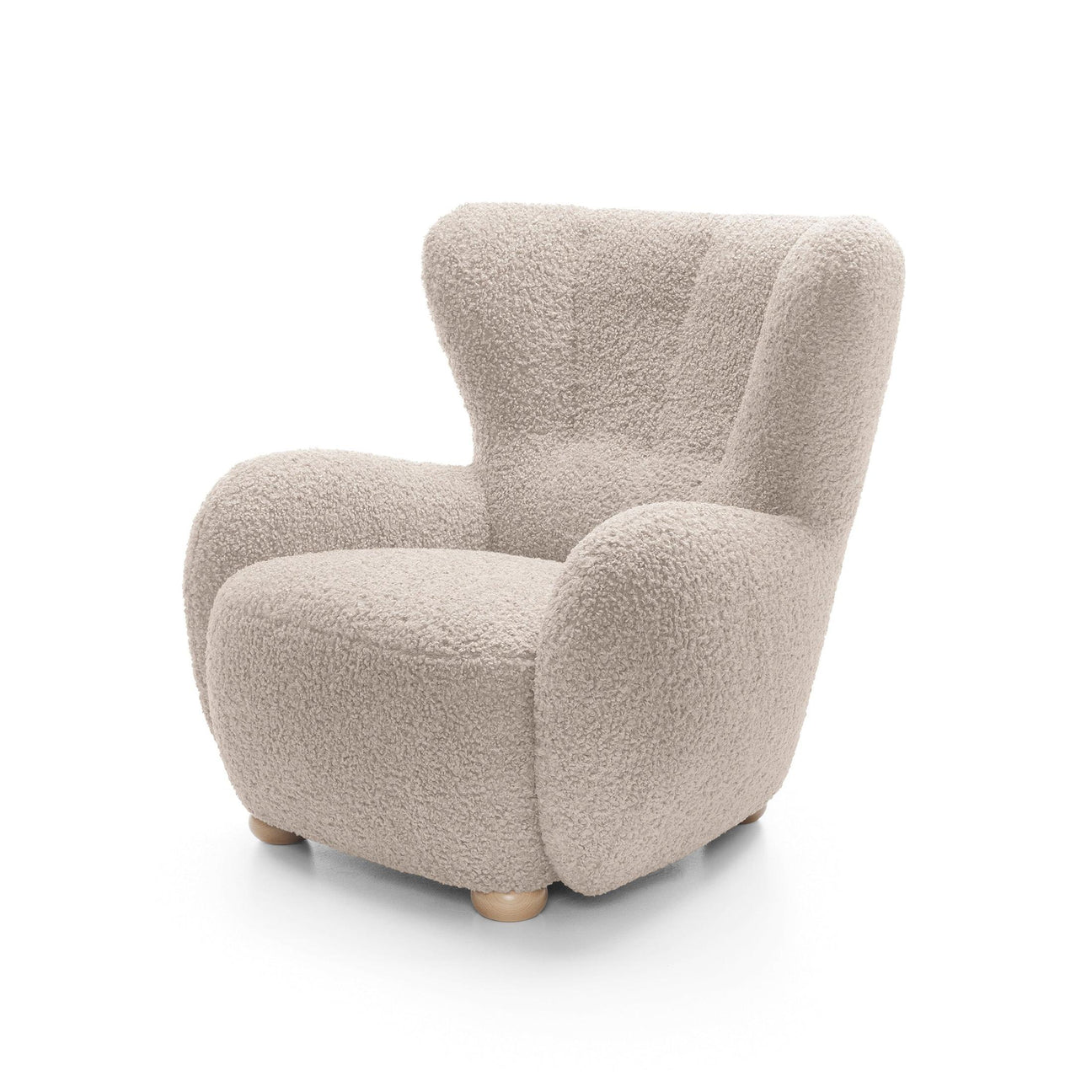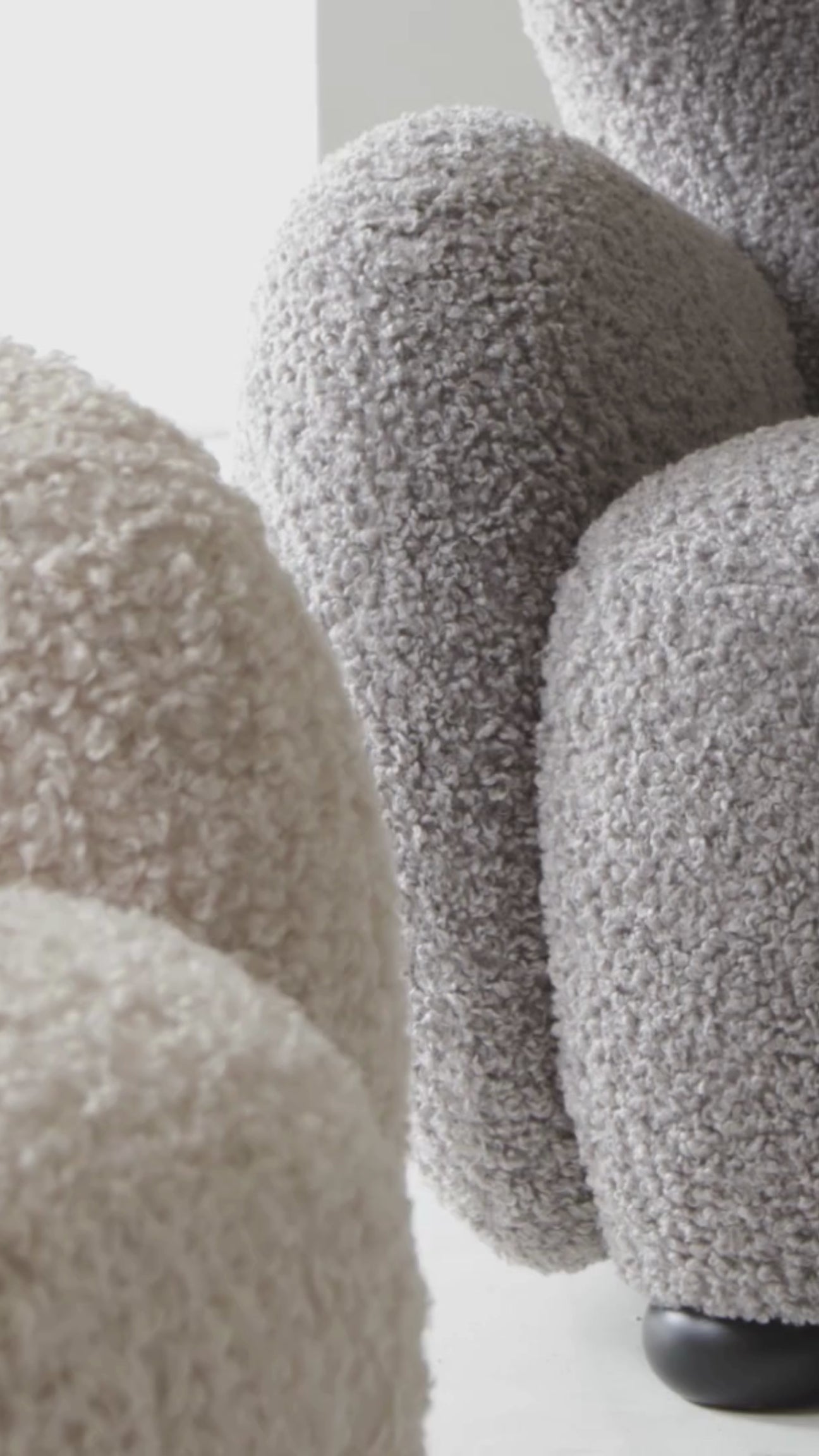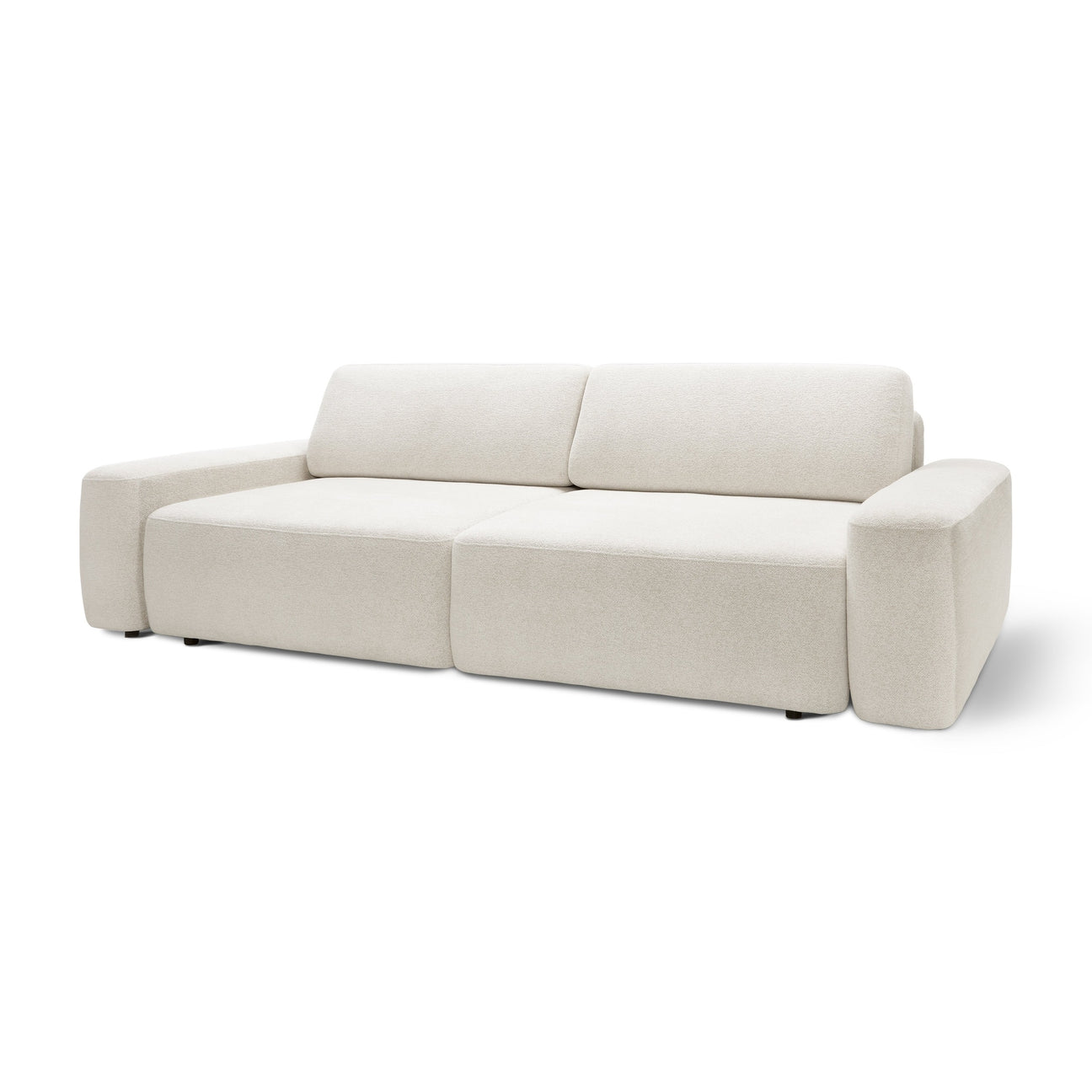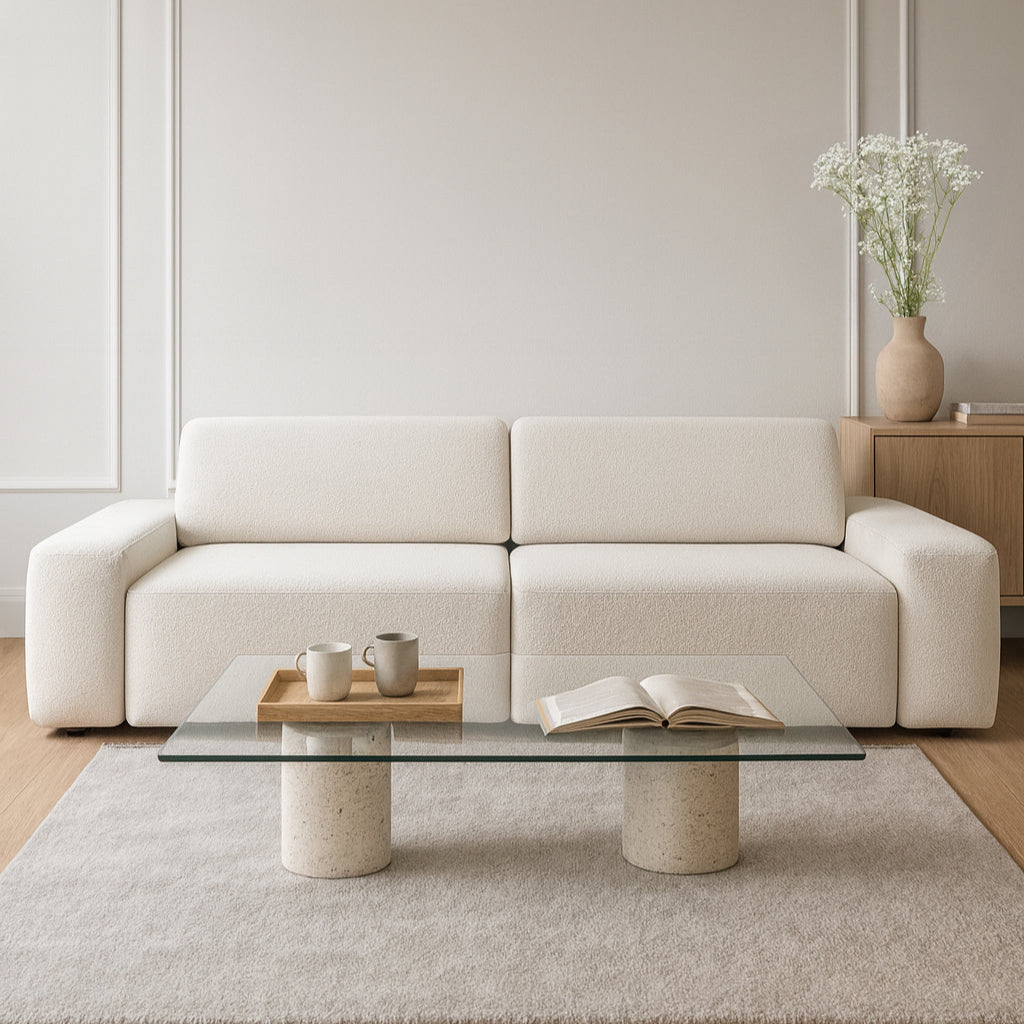Have you ever stood in an empty room and dreamed of what it would look like once you'd decorated it? Perhaps you remember that moment after moving in, when you stood surrounded by boxes, imagining the perfect place to live? Or those Sundays when you and your mom were browsing furniture catalogs, planning the "big swap" in the living room, which usually ended with a sigh: "But where are we going to fit it all?"
Back then, furniture was chosen for decades. The sofa stood against the wall, the armchair in its corner, and the tables had their established places like actors in a long-running play. A change meant a revolution—a move, a renovation, an expense that took months to plan.
Modern life has a completely different rhythm. Today, you can work at your desk in the morning, practice yoga in the living room at noon, and then transform the same space into a home theater in the evening. Your home must keep up with the pace of life, which happens every moment, not just on weekends or holidays.
Today , loving the warmth of home means creating a space that breathes with you. It's not a museum of beautiful objects, but a workshop for living, where each day can bring a new arrangement, a new idea, new needs. It's this philosophy that gives rise to modular furniture—chameleonic furniture that adapts to your life rather than forcing you to adapt to it.
From wall units to modular freedom
Every generation has its own philosophy of home decorating – and each says something about the times they lived in. Grandma could proudly display the same sideboard she received for her wedding throughout her life. Every figurine, every napkin had its place, which remained unchanged for decades. The living room was like a ceremonial space – beautiful, orderly, and enduring, like the family itself.
For this generation, home was a fortress of stability in an uncertain world. Furniture was purchased on installments, with the hope that it would last for children and grandchildren. Moving was a minor disaster, as it meant breaking away from the structure that had been built over the years.
Your parents already saw space differently. Do you remember those first sets of furniture that could be moved around? A sofa and two armchairs that sometimes stood side by side, sometimes formed a looser arrangement? It was like slowly opening up to the idea that a home could change without losing its character.
And we? We live in an age where change is the order of the day. We switch between the home office and evening relaxation, between the solitary reading corner and party central. Our work travels from the office to home and back again, our hobbies change with the seasons, our needs evolve from month to month. For us, rigid arrangements are like wearing the same outfit year-round – there is simply no
The Philosophy of Building Blocks for Adults
Modularity harkens back to childhood wisdom—the days when you could build a castle out of blocks in the morning and transform it into a spaceship in the afternoon. Customization isn't just about choosing colors or materials, but also about the ability to continually create and transform your space.
Modular furniture is a response to the pace of modern life. In a world where plans change overnight, where remote work can mean transforming a living room into a desk in minutes, and where a spontaneous visit from parents requires a quick sleeping space, modularity becomes a superpower.
It's also a philosophy of sustainability. Instead of throwing out the entire sofa when your living situation changes, you can reconfigure modules, add new elements, and adapt to new needs. It's long-term thinking that respects both your budget and the planet.

Dahlia: Adaptation Geometry
The Dalia sofa from the Pillovely foam collection is a perfect example of how modularity can combine practicality with the poetry of form. Its clean, geometric lines evoke the precision of Japanese origami, yet also offer endless possibilities for transformation.
Comprising two identical sections, the Dalia allows you to create various configurations to suit your lifestyle. Today, you can place the modules side by side as a classic two-seater sofa for watching a movie. Tomorrow, separate them to create two comfortable armchairs for reading in peace. Next week, fold them flat to transform them into a spacious mattress for weekend guests.
The foam construction means each module is lightweight enough to allow you to transform the setup yourself, without the help of another person. This provides freedom of arrangement that requires neither advance planning nor physical strength.
Black piping accentuates the contours, not only adding character but also helping to visually define the individual modules. This means that even when separated, the elements look like a well-thought-out composition, not a random collection of furniture.
Two options of corduroy or bouclé upholstery mean you can choose the material that best suits your lifestyle – corduroy for those who appreciate classic elegance, bouclé for those who appreciate trendy textures. Both materials are pleasant to the touch and durable.
Lunaria: Organic Modularity
The Lunaria sofa , also from the Pillovely foam collection , represents a completely different approach to modularity—one inspired by natural forms and organic shapes. Its semicircular shape evokes a moon phase or the parting petals of a flower, but this isn't just a poetic metaphor—it's a functional solution.
Lunaria's modular design allows you to create configurations that grow with your needs. You can start with one element as a cozy reading chair in your new apartment. As your situation changes—perhaps you find a partner, perhaps you move to a larger apartment—you can add a second element to create a larger sofa.
The reversible functionality means each Lunaria module is beautiful from every perspective. You can place it against a wall as a classic sofa, or just as easily in the center of a room as a sculptural installation that defines the space with its presence.
Several elements together can create a full circle – an island of relaxation in the center of the living room, a serpentine along a long wall, or an asymmetrical composition that divides the open space into different functional zones.
The legless design allows Lunaria to "float" on the floor, visually enlarging the space and making it easier to move items. This is especially important in small apartments, where every centimeter counts.

Cordia: A Masterpiece of Functionality
The Cordia sofa is another example of how intelligently designed modularity can change the way we think about furniture. This heart-shaped foam sofa conceals a true treasure trove of functionality – two extendable mattresses that can be pulled out as needed.
Cordia is a true transformer – in its basic form it is an elegant two-seater sofa, but in just a few seconds it can be transformed into a spacious double bed for two people, two separate sleeping places when partially extended, or a spacious relaxation area perfect for movie marathons.
The black frame, emphasizing the contours, adds character and defines the geometric form, giving the sofa a modern, graphic character. Beneath the corduroy upholstery in a subtle, light shade lies an advanced construction made of a solid wood base and furniture board filled with flexible, high-density foam.
The pull-out mattress system was designed with everyday comfort in mind. The lightweight foam elements slide out smoothly and effortlessly – even a teenager can handle them. Everything fits within the sofa's compact shape, requiring no additional storage space.
Lily: floral delicacy in a modular form
The Lily sofa is a poetry of modularity inspired by the lily flower – a symbol of purity, elegance, and rebirth. The Pillovely foam collection represents a subtle approach to sleeping, with every element carefully considered for everyday comfort and aesthetics.
Its modular design with a sleeping function allows you to create various configurations to suit your lifestyle. During the day, Lily can serve as an elegant sofa for relaxing, in the evenings it transforms into a place to rest overnight for guests, and on the weekends it becomes the center of family gatherings.
Floral symbolism is evident not only in the name but also in the organic softness of its forms and the natural harmony of its proportions. Lily is a piece of furniture that doesn't dominate a space, but rather envelops it with its presence, creating an atmosphere of peace and homely warmth.
The lightweight foam makes transformations intuitive and effortless. You can easily adapt the configuration to your needs—from a private reading nook to a spacious sleeping area for unexpected guests.

Bamby: Youthful energy in adult form
The Bamby sofa evokes a symbol of youth, flexibility, and natural grace. Within the Pillovely modular range , it represents a dynamic approach to living in a space where sleeping function is combined with daily activity.
The energy of youth translates into versatility – Bamby will work equally well in a teenager's room, a first apartment, or a home office that needs to become a relaxation zone in the evenings. This piece of furniture is for people who live intense lives and need their space to keep up with their pace.
The modular design with a sleeping function means Bamby can be used as a sofa for everyday use, a mattress for a quick nap between online meetings, or a comfortable bed for a friend staying for a spontaneous late-night chat.
The natural flexibility of the foam construction allows for frequent configuration changes without fear of damaging the mechanisms or upholstery. This is a piece of furniture designed for living, not display.
Different lives, different configurations
You are someone. You are valuable. And your life has its own unique rhythm, which should be reflected in the design of your space. Modular furniture allows you to adapt your interior to who you are now, but also gives you the freedom to change when you become someone else.
Perhaps you're single and living in your first apartment? You start with one Lunaria module as a place to relax after work. A year later, when your financial situation improves, you add a second module. In two years, when you find a partner, the configuration might evolve into a larger, more communal space.
Or maybe you are a couple of young professionals? Dalia in a two-armchair configuration allows you to maintain your individual space while working remotely, but in the evening you can combine the elements into a sofa for watching TV series together.
Perhaps you're a family with small children? Modular sofas can be arranged to create a safe play space – modules arranged in a circle create a natural arena where children can play under the watchful eye of their parents.
Perhaps you often entertain guests? Your sofa might normally be compact, but for parties, you can extend the units along the walls to increase seating capacity. And if someone stays overnight, some of the units can be folded into a mattress.
Perhaps you're someone who enjoys frequent changes? Modularity allows you to experiment with your layout weekly without spending money on new furniture. It's like changing the wallpaper, but in three dimensions.

The Practical Magic of Everyday Transformations
Eco-friendliness in furniture renovation tips takes on a new meaning in the context of modular furniture. When you can customize your sofa instead of replacing it, you're making an environmentally friendly choice. A single purchase can last through different life stages, in different homes, and for different needs.
Zero assembly with Pillovely foam sofas means transformations can be truly spontaneous. No tools, instructions, or help are needed. An idea for a new configuration can start in the morning and be implemented before breakfast.
Compact transport also means easy moves. Instead of worrying about whether your sofa will fit through the door of your new apartment, you can pack the items into compact boxes and the problem is solved. This is especially important for the generation that moves frequently.
The lightweight foam construction allows for frequent rearrangements without the risk of damaging the floor or your back. Moving a Dalia or Lunaria module takes seconds, not hours of planning and physical effort.
Interchangeable covers mean you can change not only the configuration but also the color scheme. A summer arrangement can have bright, fresh colors, while a winter one can have warm, cozy shades. It's like having several different sofas for the price of one.
The Psychology of Modular Space
Living in a space with modular furniture influences our thinking about home in ways that go beyond practicality. A sense of empowerment is one of the most important psychological benefits – when you can easily change your space, you feel more in control of your environment.
Mental flexibility is another benefit. People living in flexible spaces are often more creative, open to change, and adaptable. When your sofa can be three different pieces of furniture, it's easier to think about other aspects of life in terms of possibilities, not limitations.
Reduce the stress of decision-making. Choosing a traditional sofa is often a long-term decision – the pressure is enormous. Choosing a modular sofa is less risky because you can always adapt, change, or reconfigure it.
A sense of newness without the added expense. People crave change, novelty, and freshness in their surroundings. Modular furniture allows them to meet this need without purchasing new items.

Modularity as a philosophy of life
Modular thinking isn't just an approach to furniture—it's a way of living in an unpredictable world. Resilience through flexibility, adaptation through preparation for various scenarios, wisdom through understanding that change is not a threat but an opportunity.
Functional minimalism – modular furniture allows you to have fewer things that can do more. Instead of a sofa, two armchairs, and a mattress for guests, you have a single system that can accommodate all of these items as needed.
A sharing mentality – modular furniture is also easier to share. When you move in with a partner, you can combine your modules into a larger system. When you separate, each of you takes their own pieces. This approach to furniture is responsive to modern relationships.
Future-proofing – by purchasing modular furniture, you're investing in solutions that will work no matter how your life changes. A new job, a new partner, a new apartment, a new hobby – a modular sofa will fit any scenario.
Small spaces, big possibilities
In the era of 35-50 square meter apartments, modularity is becoming not a luxury but a necessity. Every square meter counts , and furniture that can serve different functions at different times is worth its weight in gold.
Day and night – the same modules that serve as seating during the day can become comfortable mattresses at night. Work and relaxation – elements that are part of the remote work zone in the morning become the center of entertainment in the evening.
Solo and social – when you're alone, you can arrange your furniture in a way that promotes introversion and concentration. When guests arrive, this same space can become the center of a social gathering.
Storage solutions – some modules may have hidden compartments, while others can serve as a surface for storing items. Modularity also means modular storage functions.

Technology in the service of modularity
The future of modular furniture will be even smarter. Imagine modules that know how to connect themselves, apps that help visualize different configurations in your space, and systems that learn your preferences and suggest optimal layouts.
Augmented reality can allow you to test different configurations before making a final decision. Integration with a smart home could mean modules that automatically adapt to different activities—harder for work, softer for relaxation.
Sustainable materials will become increasingly important – modules made from recyclable materials, biodegradable foams, and organic fabrics. Modularity plus ecology is a powerful combination.
Sharing in the community – maybe in the future we will share modules with neighbors, borrow additional elements for special occasions, creating a circular furniture economy.
Colors and textures in a modular composition
Modularity also means the freedom to play with colors and textures. Mixing materials – one module in corduroy, another in bouclé, and a third in a smooth fabric. Color gradients – from light beige through warm gray to deep anthracite.
Seasonal changes – bright, airy colors in summer, deep, cozy shades in winter. Styling that depends on your mood – bright colors for energizing weekends, muted shades for relaxing weekdays.
Personal Storytelling – Each module can represent a different part of your personality, a different aspect of your life. Together, they create a complete picture of who you are.
The social dimension of modularity
Modular furniture is changing the way we welcome guests, build relationships, and create community. Flexible guest hosting – you can adapt the configuration to the type of gathering: an intimate conversation for two, a family movie night, or a party for friends.
Democratic seating – In a traditional living room, there's often a hierarchy of seating (the best spot for the host, an uncomfortable corner for the least important guest). Modular furniture allows for more egalitarian arrangements.
Collaborative spaces – when guests can help reconfigure the space, they become co-creators of the experience, not just passive recipients of hospitality.
Cross-generational comfort – different modules can be configured for different needs: higher seating for older relatives, floor-level options for children, classic heights for adults.

The future of interior design
Modularity isn't a trend, but a fundamental shift in thinking about home design. Subscription models for furniture, where modules can be regularly replaced with new ones. Collaborative design , where community input shapes the evolution of modules. Personalized production , where each module is slightly customized to individual needs.
Biophilic integration – modules with built-in planters, natural materials, and organic shapes that mimic nature. Health-focused design – modules that promote good posture, encourage movement, and support mental well-being.
Cross-cultural fusion – modularity allows for the blending of design languages from different cultures, creating a truly global aesthetic that is also deeply personal.
The place where form ends and life begins
Finally, the most important truth about modular furniture: it's not about the furniture, but about the life you can live with it . It's not just furniture; it's tools for creating spaces that serve your dreams, your relationships, and your evolving needs.
Loving the warmth of home in the context of modularity means understanding that a home is not a static setting, but a living space that breathes, changes, and grows with you. It's recognizing that your needs today may differ from those of tomorrow, and that thoughtfully designed furniture should support this evolution.
Modular furniture is an invitation to play , to experiment, to change your mind, to try new things. It allows for flexibility in a world that often demands rigidity, and to remain curious about your own needs and preferences.
When you choose modular furniture, you choose freedom. The freedom to change, develop, and adapt. The freedom to live in a way that is truly yours, in a space that evolves with you.


